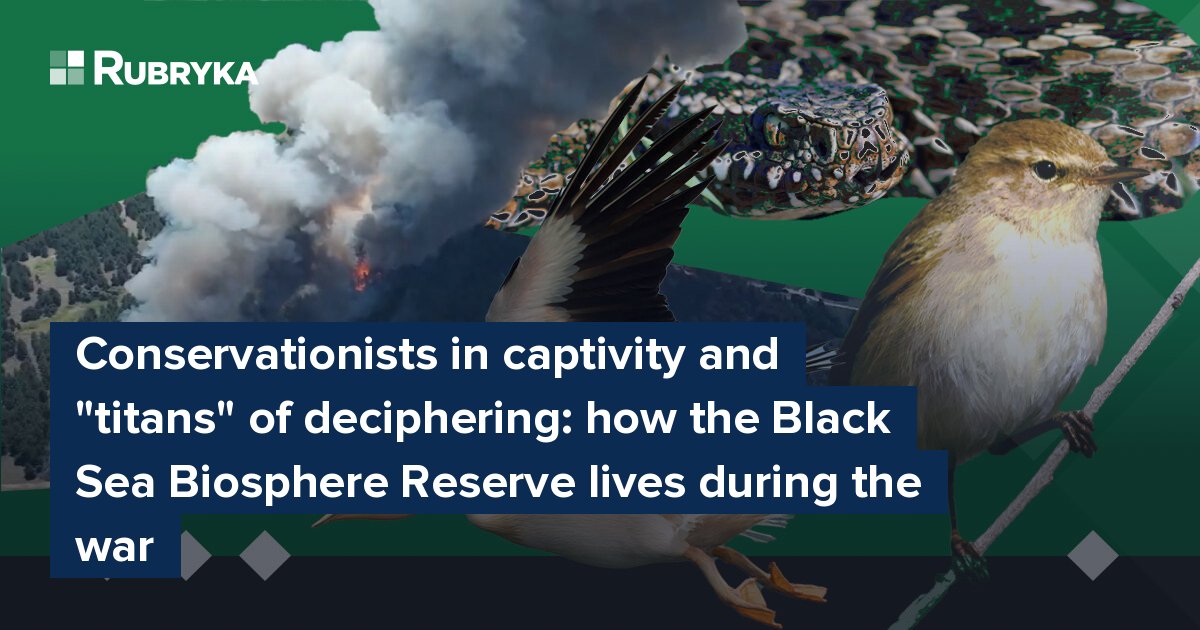
The Black Sea Biosphere Reserve can be found on the northern coast of the Black Sea, about 45 km southwest of Kherson. It protects environments such as shallow coastal lakes and estuaries, inland wetlands, dunes, halophytic coastal steppes, and forests. In 1984, the Black Sea Biosphere Reserve was recognized as a UNESCO Biosphere Reserve. The reserve's main area is the picturesque Kinburn Spit, a popular destination on the Black Sea coast. Another part of the reserve is the Ivory Coast of Sviatoslav National Nature Park.
Ecorubric launched a series of articles about UNESCO biosphere reserves, including those that are occupied, on the demarcation line, and deep in the rear. Through these articles, Rubyka aims to shed light on how the ongoing war has impacted these territories and to raise awareness about the lives of the local people and the environment in Ukraine.
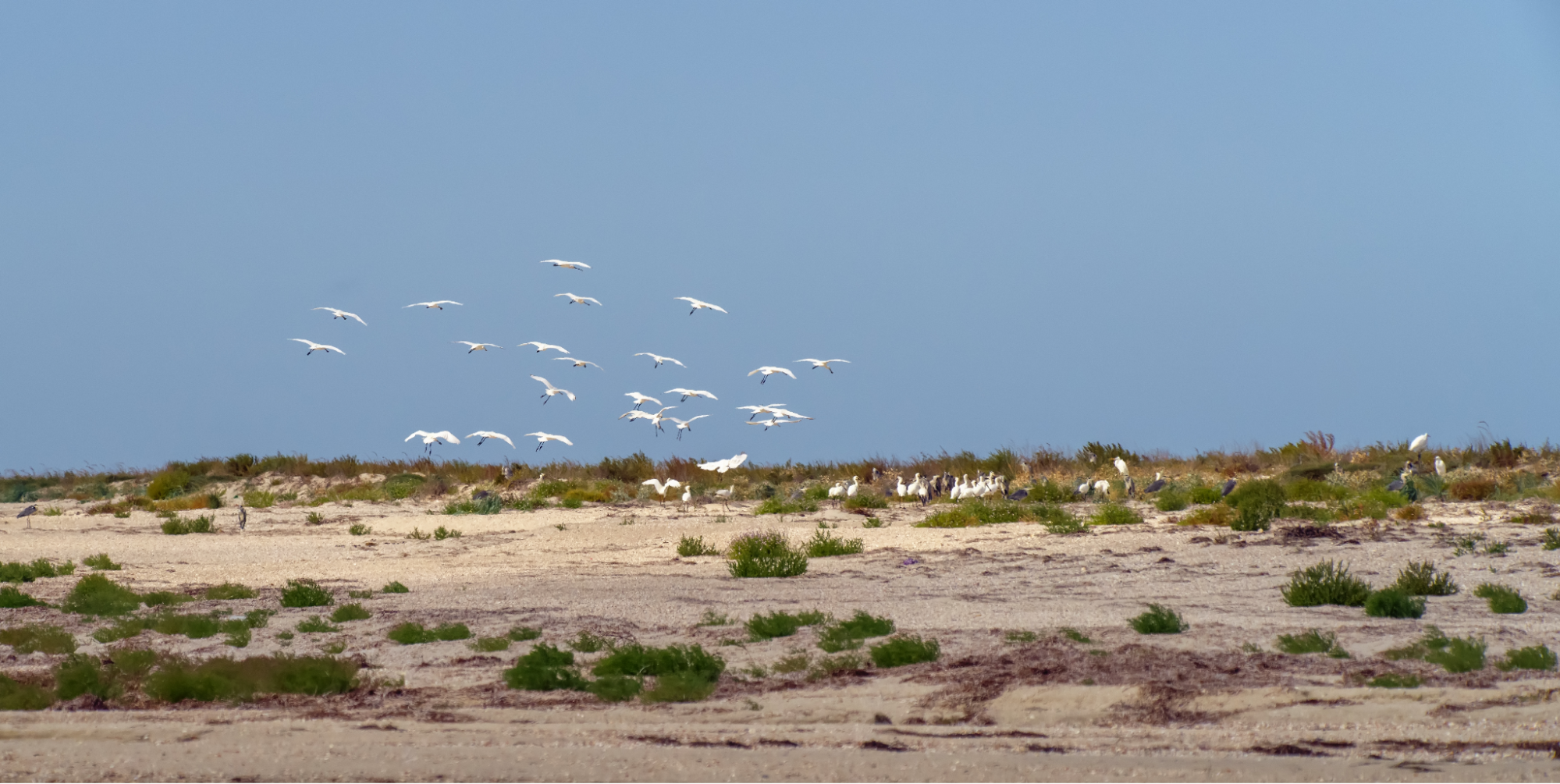
The Black Sea Biosphere Reserve is highly regarded for its abundance of nesting sites for wild birds. These vital habitats are protected under the Ramsar Convention and are recognized as valuable wetlands on a global scale. Photo: Ihor Chervonenko, 2020.
The Russian forces have occupied the Black Sea Biosphere Reserve since the start of their full-scale invasion, so it is currently not possible to visit the area. However, Rubryka found people ready to tell and show what is happening during the occupation at the favorite vacation spot of many Ukrainians — the picturesque Kinburn — and how Ukrainian scientists are tenaciously continuing their work in the face of the difficulties posed by the war.
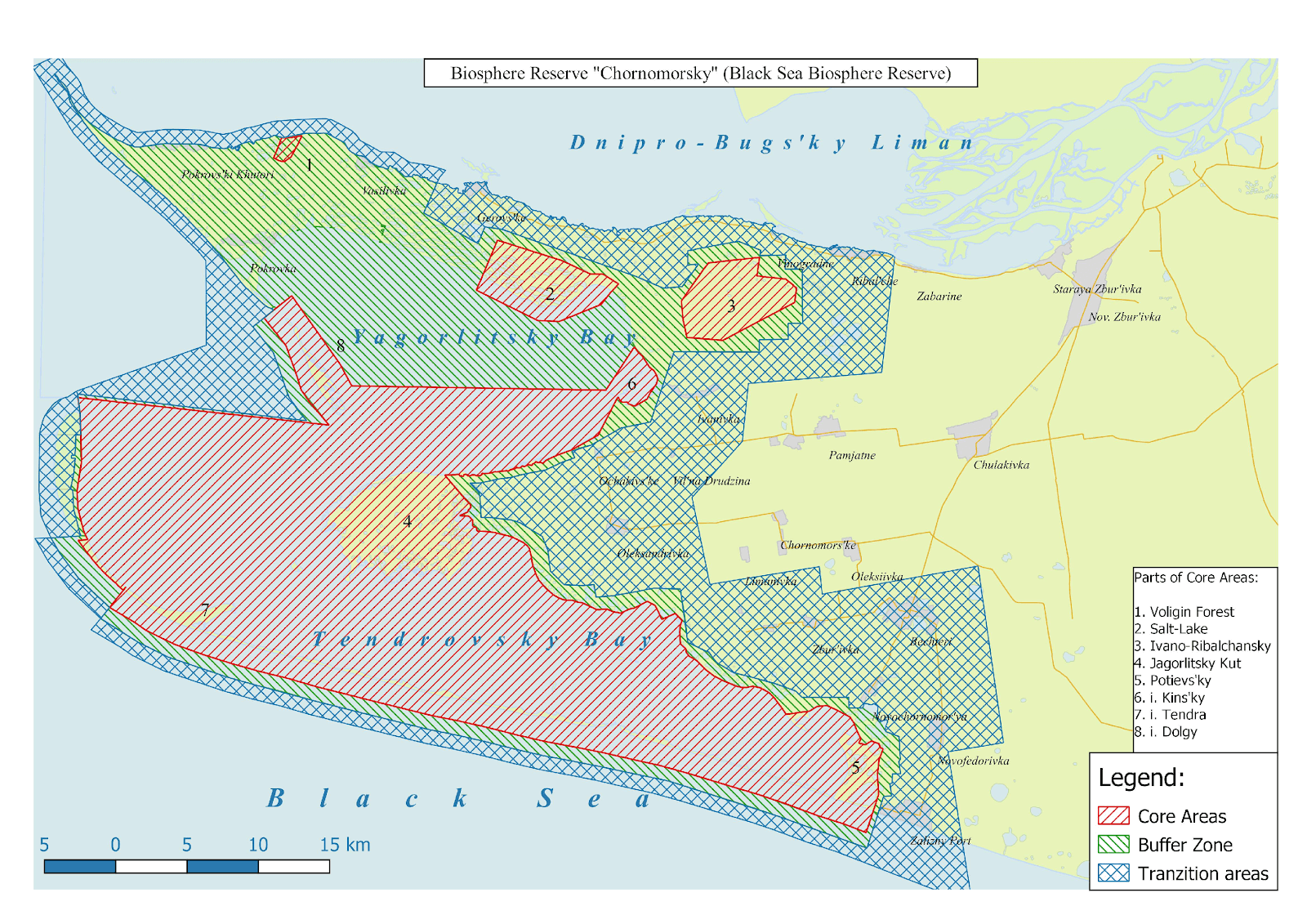
The territory of the Black Sea Biosphere Reserve. Source: wownature.in.ua
The Kinbourn Spit is constantly ablaze
According to satellite data, the Ivory Coast of Sviatoslav National Nature Park experienced a total of 67 fires in 2022 and 141 – in 2023. These fires burned approximately 6,300 hectares of land, affecting some areas multiple times.
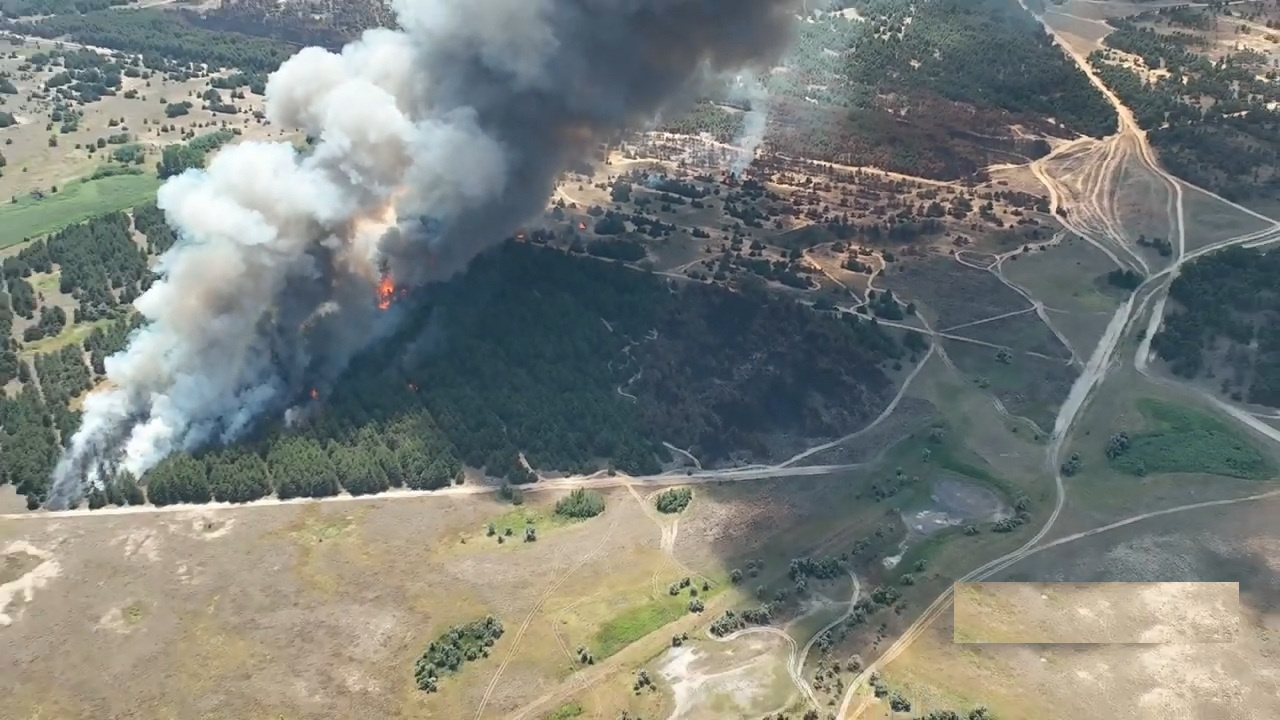
During a full-blown war, a fire rages on the Ivory Coast of Sviatoslav National Nature Park territory. Unfortunately, Ukrainian equipment cannot access the area, making it difficult to extinguish the flames. The park has provided an aerial photo for reference.
The red-listed orchids and other one-of-a-kind plants and animals in Kinburn are in danger due to the fires. The fires have caused substantial destruction to forests, steppe areas, floodplains, and lowland plants. Such devastating fires can last for weeks.
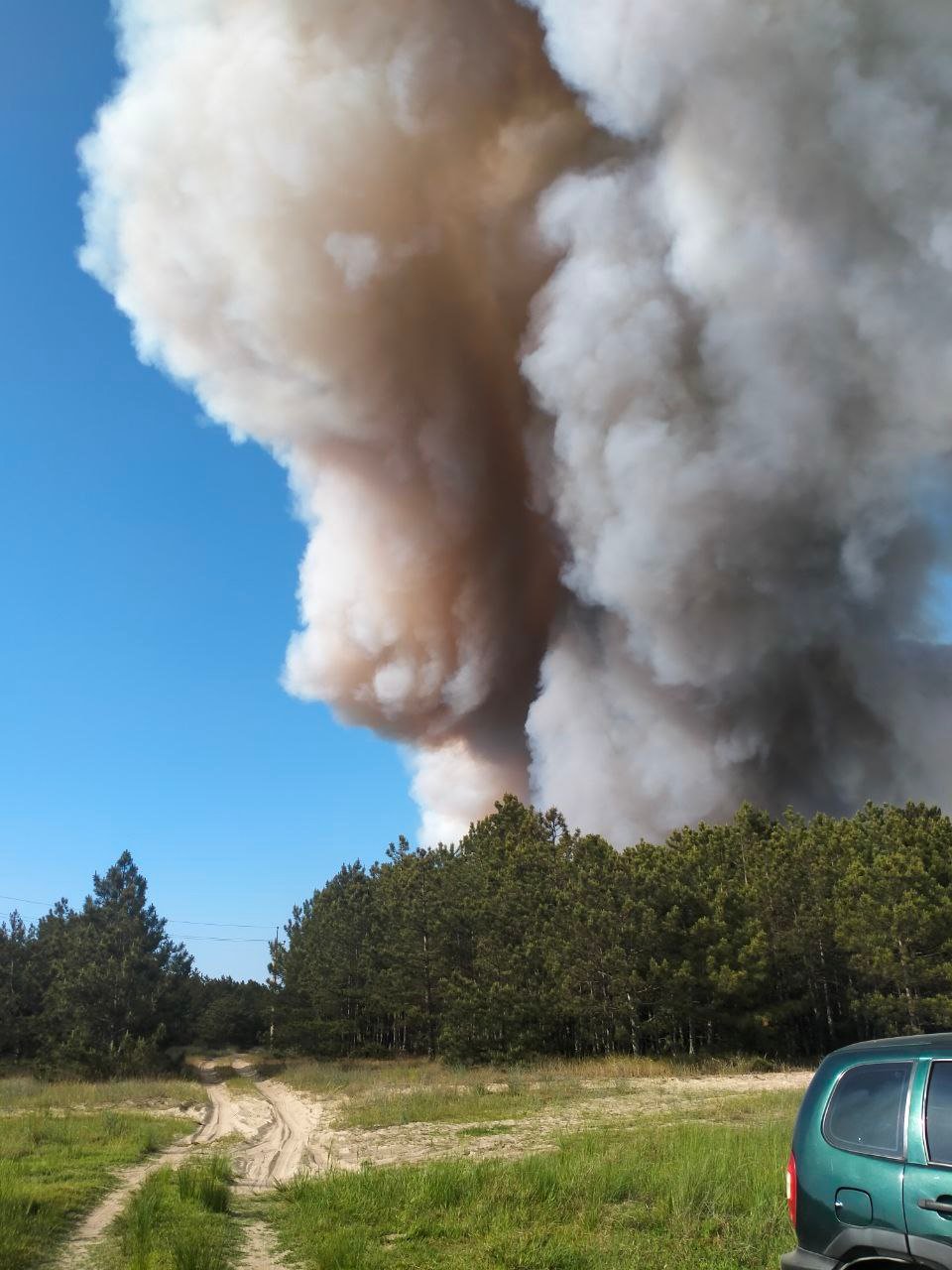
Combining dry vegetation with pine plantations creates a highly flammable situation. These types of fires are challenging to extinguish and, in occupied conditions, virtually impossible. Photo courtesy of Ivory Coast of Sviatoslav National Nature Park
Furthermore, the biosphere reserve's territories are heavily mined and marked by fortifications. According to Pavlo Kholodniak, the deputy director of the Ivory Coast of Sviatoslav National Nature Park situated on the western part of the Kinburn Peninsula, the area was previously under Ukrainian control until September 2022. However, the occupiers have started digging in and mining the territory since the Russian invasion.

The Red Book includes all three dolphin species found in the Black Sea. Before the war, they were commonly seen in the Black Sea Reserve, but following the Russian terrorist attack and the explosion of the Kakhovka HPP dam, there has been a rise in dolphin mortality rates. These animals also face added stress from the use of sonar equipment and the presence of underwater mines in the sea. Photo: Ihor Chervonenko, 2020.
Damage is also caused by the transportation of military equipment, air pollution from fires, and contamination of the water due to the military presence and the aftermath of the most significant terrorist attack in the 21st century – the destruction of the Kakhovka HPP dam, resulting in the flooding of approximately 3,750 acres of the Dnipro-Buzka estuary shoreline.
Scientists' years of hard work have been wasted
Viktoriia Pliusch, the head engineer at the Black Sea Biosphere Reserve's Department of Ecological and Educational Work under the National Academy of Sciences of Ukraine, reported that the administration building in Hola Prystan suffered a catastrophic impact and destruction.
Scientists, eco–educators, and taxidermists invested their efforts into everything that was destroyed, including the precious exhibits at the ecological and educational center. With 403 exhibits, not counting dioramas, painting tablets, and photographs, the center's exposition was invaluable. The library, which housed 3,480 copies of scientific and popular science literature, a photo library, and didactic materials, was also lost. The whereabouts of the reports and Chronicles of Nature remain unknown.
"I'll never forget my trip… When we were living under occupation, the city had major issues with internet access, so storing personal information in the cloud was out of the question. That's why, when we decided to travel to the safe zone, we had to carry our laptop and hard drive with us, even placing them under the child, knowing our bags would be thoroughly checked," explained Viktoriia.
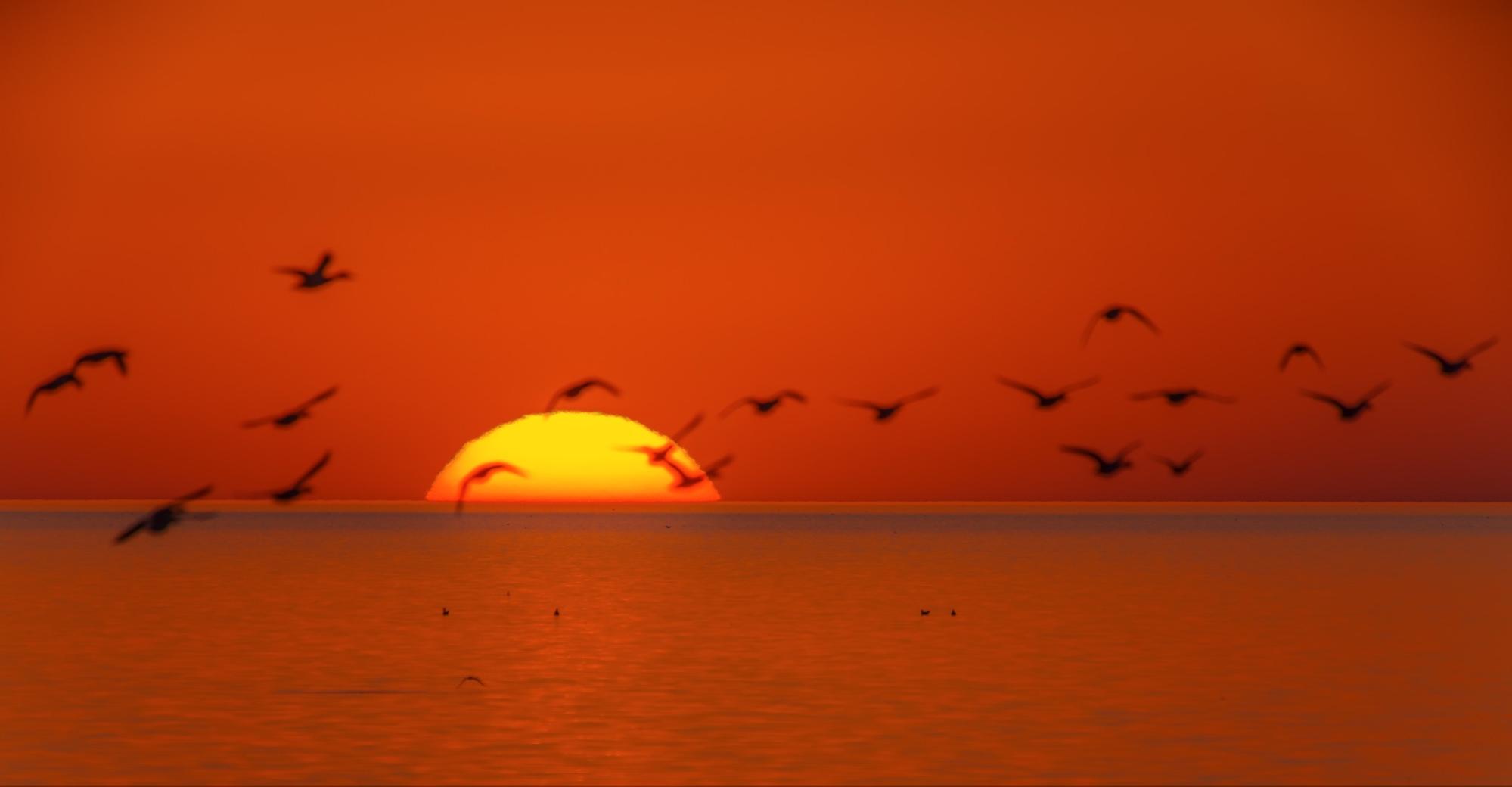
Photo: Ihor Chervonenko, 2020
Russian government places their administrators in the territories of the nature reserve fund and detains conservationists
During the initial days of the full-scale invasion, Anatoliy Yurchenko, the current head of the Black Sea Biosphere Reserve, called for an emergency meeting with the institution's staff.
"The employees were given their personal files. State Protection Service of Protected Areas members actively monitored their designated areas. Meanwhile, personnel from the Department of Scientific Research and Integrated Monitoring of Ecosystems and the Department of Ecological and Educational Work worked remotely. Staff from the personnel and accounting departments took turns based on the current situation. Additionally, male workers were stationed at the reserve round the clock to safeguard the equipment and materials," Viktoriia Pliusch shares her experience of the initial days of the full-scale invasion. Rubryka will discuss the events that followed.
The Black Sea Biosphere Reserve saw a Russian-run administration established by 58-year-old resident Ihor Zhdaniuk, a collaborationist from the Holopristan community of the Tavria district. Zhdaniuk, who was not a scientist but a farmer and director of the farming company "Saperavi," had previously sold his products to Russia until 2014 and later to Belarus when the Russian market became unfeasible. The Center for Journalistic Investigations has reported that Zhdaniuk has been collaborating with the enemy since the occupation began, and he was given his position due to his close relationship with the first Gauleiter of Hola Prystan, Gennadiy Nedialkov. As a result of his actions, Zhdaniuk was informed of his suspicion of colluding in absentia. In Ukraine, those found to be collaborators can face a sentence of 5 to 10 years in prison and may have their property confiscated.
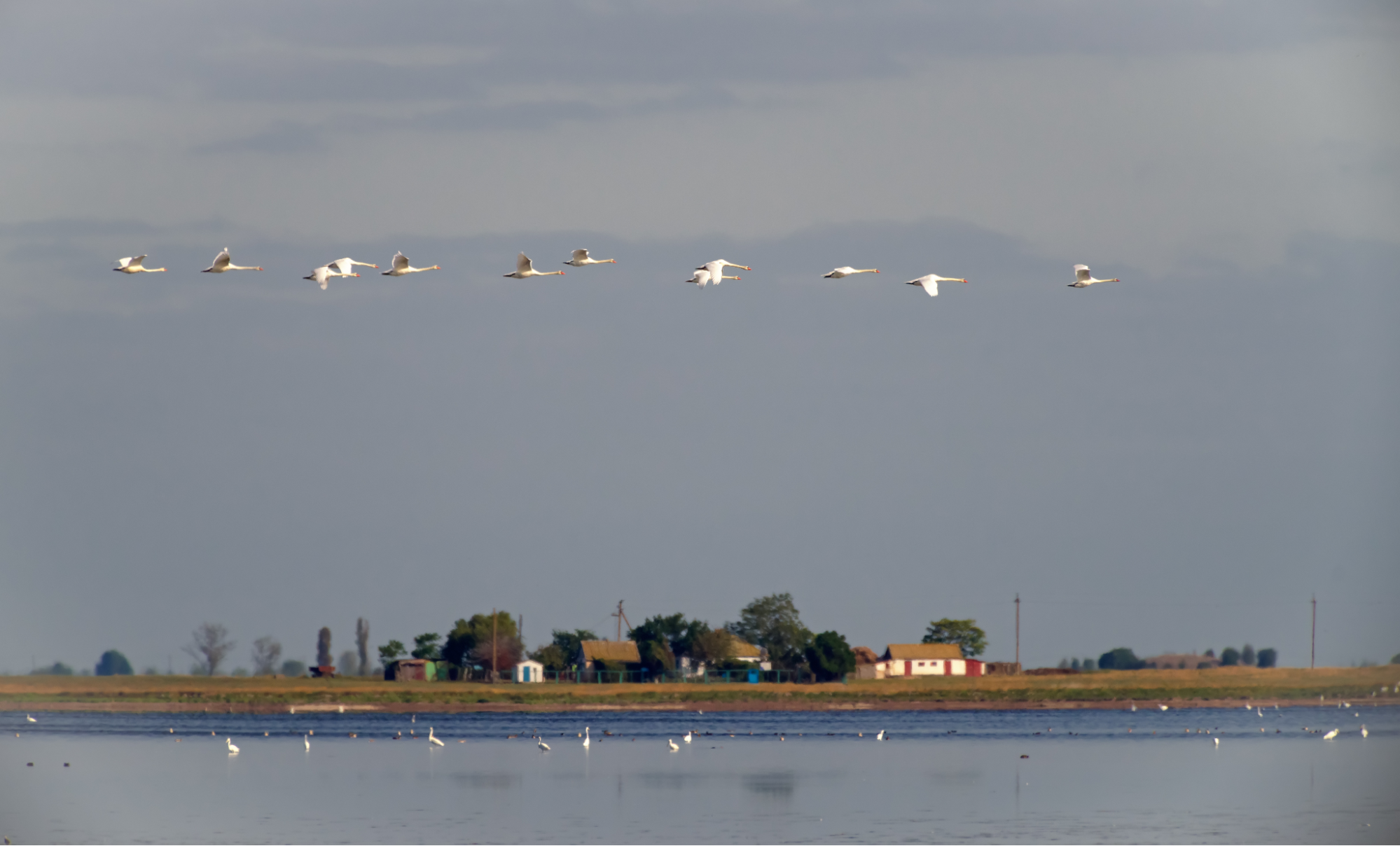
A photo was taken in 2020 by Ihor Chervonenko of one of the hunting boundaries in Potiivka, located in the Black Sea Biosphere Reserve near the Black Sea BayThe Russian occupation authorities have a habit of placing their own administration in charge of the nature reserve areas. However, there is another tendency among the enemies of Russia: they tend to capture conservationists. This was the case for Leonid Yanchyshyn, a hunter from the Black Sea Reserve, whom Russian invaders abducted in July of 2022. Fortunately, he escaped from captivity, and despite being in the occupied territory, he maintained his pro-Ukrainian stance. Sadly, he will now be unable to share his experience as he is currently paralyzed and, as stated by his wife, may never speak again.
Another instance is that of an employee of the Ivory Coast of Sviatoslav National Nature Park who is currently being held captive. The Russian military perceives him as a potential threat due to his former experience as a soldier in the Anti-Terrorist Operation of Ukraine.
What is the solution?
Who can we look to as an example despite the war and occupation?
In the city of Ochakiv, located in the Mykolaiv region under Ukrainian control, the Ivory Coast of Sviatoslav National Nature Park, which supports a pro-Ukrainian stance, is still functioning. The dedicated scientists of the park are carrying out their work and conducting scientific research remotely.
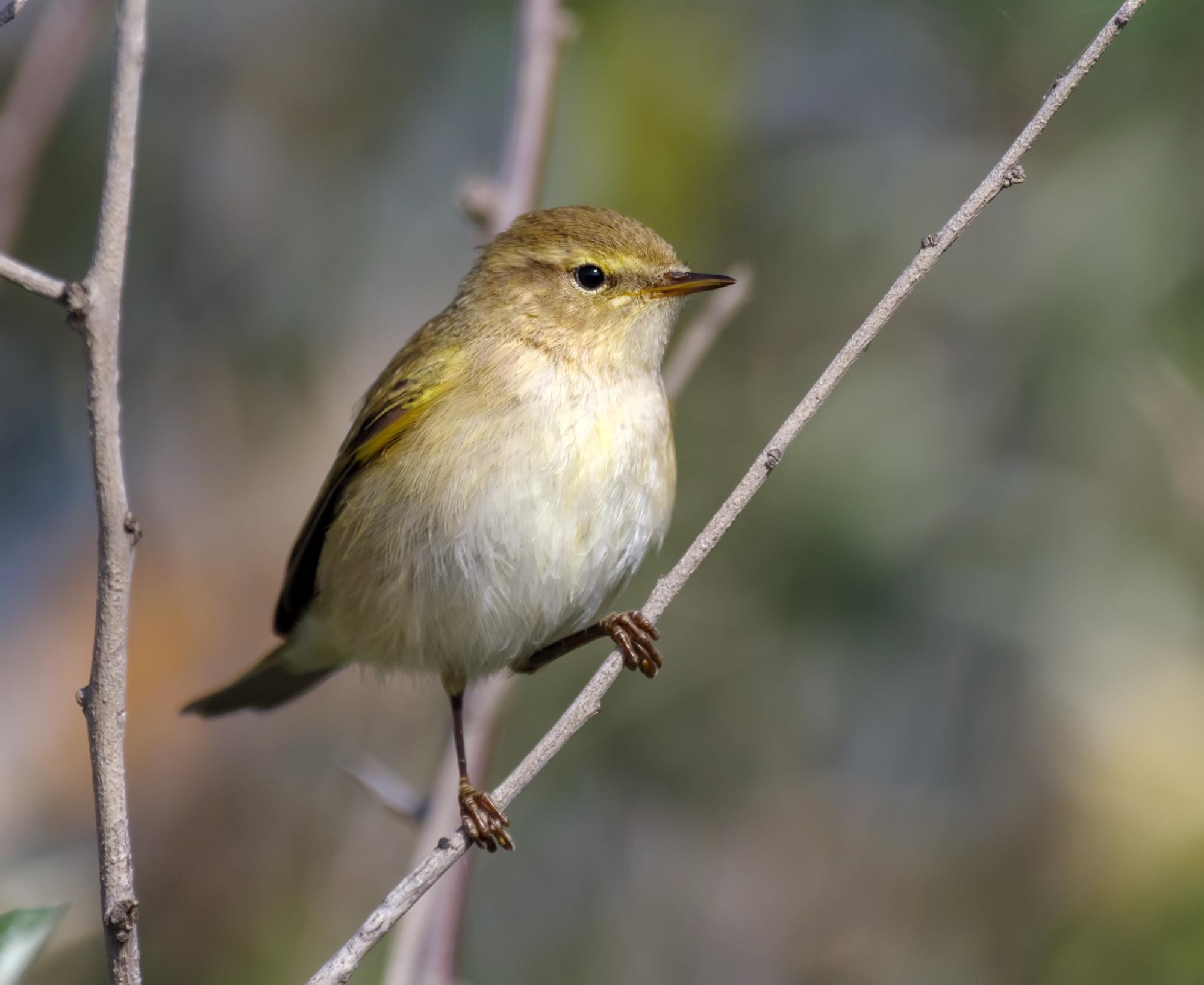
A bird called the common chiffchaff inhabits the Black Sea Reserve. Despite its small size, which is even smaller than a sparrow, this bird migrates and can travel from southern Ukraine to Africa. Photo: Ihor Chervonenko, 2020.
What options does an occupied national park have?
In reality, only part of the National Park's territory is occupied on the Kinburn Peninsula. The office within the controlled area remains operational, where National Park employees organize "Ecomarathons" for children while also making important decisions.
So, they're trying to address one of the issues affecting the regions near the Ivory Coast of Sviatoslav National Nature Park – the ongoing pollution of the shores with household waste and the lack of well-maintained paths and roads. The shallowing of the coast, sediment accumulation, and vegetation growth in the Dnipro-Buzka estuary have already resulted in limited options for summer leisure activities for residents of certain towns. The impact of erosion and landslides, illicit large-scale archaeological digging, and poaching have significant negative consequences on the environment and local communities. In November 2023, the Ministry of Environment approved the expansion of the institution's jurisdiction, making it the responsibility of the national park directorate to address the issues to protect this valuable territory.
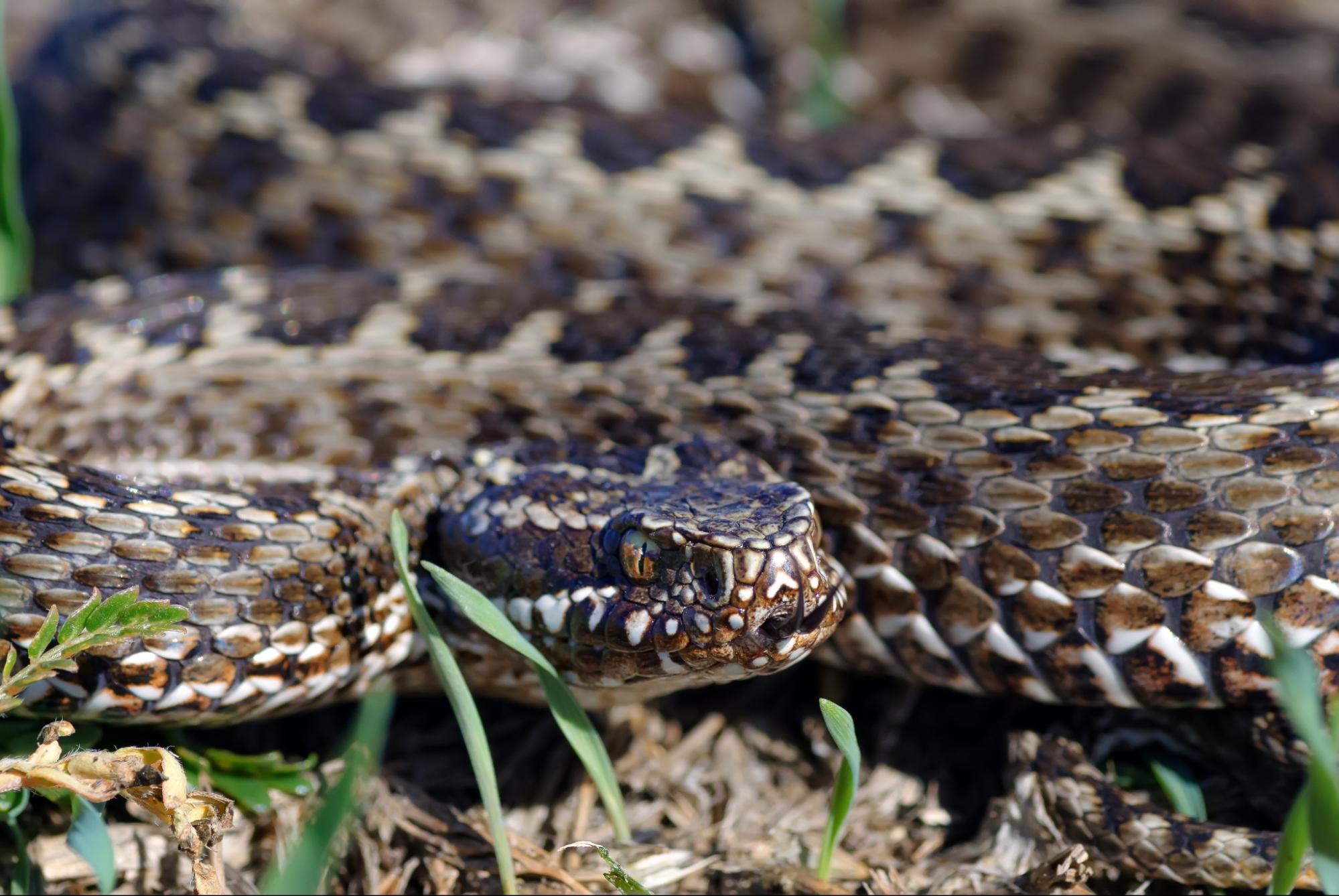
There were a significant number of snakes on the Kinburn Spit before the commencement of full-scale war. Photo: Ihor Chervonenko, 2020.
"There is no analog of the work carried out by our scientists in the world" — the scientists of the occupied park developed their own methodology for collecting data on the environment during the war
It is truly remarkable that despite the war, the "Chronicle of Nature" was still carried out in the national park during 2022 and 2023. This extensive document records the flora and fauna of the designated nature reserve areas, allowing for the identification of patterns and monitoring of the effectiveness of conservation efforts in the years to come.
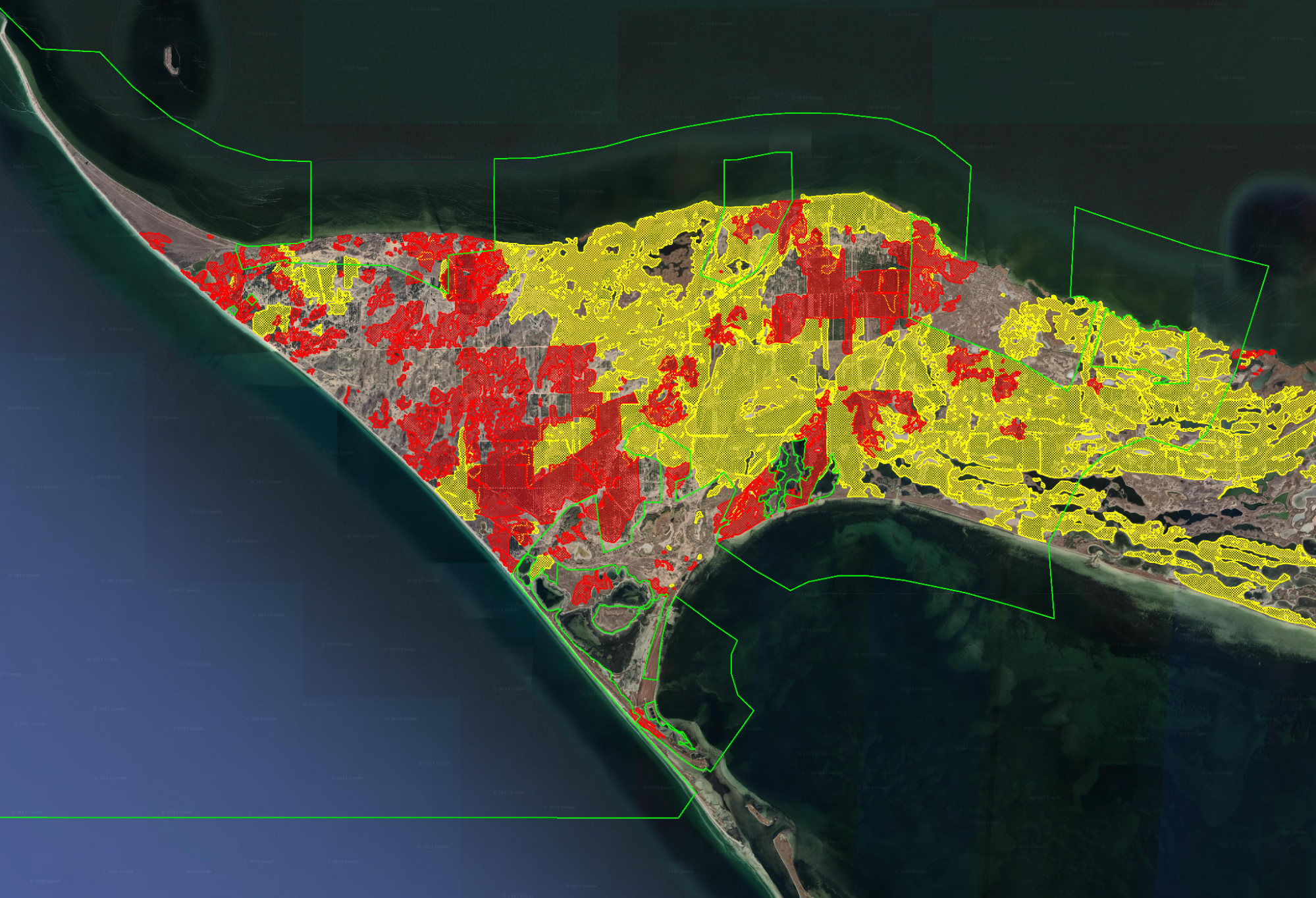
This map shows the locations of fires throughout the Kinburn Spit territory. The fire has spread to most of the area. Scientists are using satellite images to gather analytical data, which will serve as evidence of Russia's destruction of the environment in their occupied territories. Image courtesy of Ivory Coast of Sviatoslav National Nature Park, source: Earthstar Geographics.
According to Pavlo Kholodniak, scientists have been gathering analytical data on the environment since the beginning of the war. This crucial task involves monitoring areas to hold the Russian Federation responsible for ecocide on an international level.
"Our goal is to document all war-related events during the upcoming physical examination accurately. Along with specialist teams from different fields, we hope to contribute to a thorough analysis of these events for international commissions," the deputy director of the National Park explains to Rubryka.
Environmental information is gathered using various methods. The initial approach involves physically being present in the National Park. According to Kholodniak, after the Kakhovka disaster, water samples were collected in the occupied territory, and fish caught in "natural traps" in the estuaries were documented. These natural traps are periodically formed as water bodies separate from the sea. Additionally, ornithologists from the Ivory Coast of Sviatoslav National Nature Park, in collaboration with colleagues from other national parks, tracked the migration patterns of pelicans in the years 2022 and 2023.
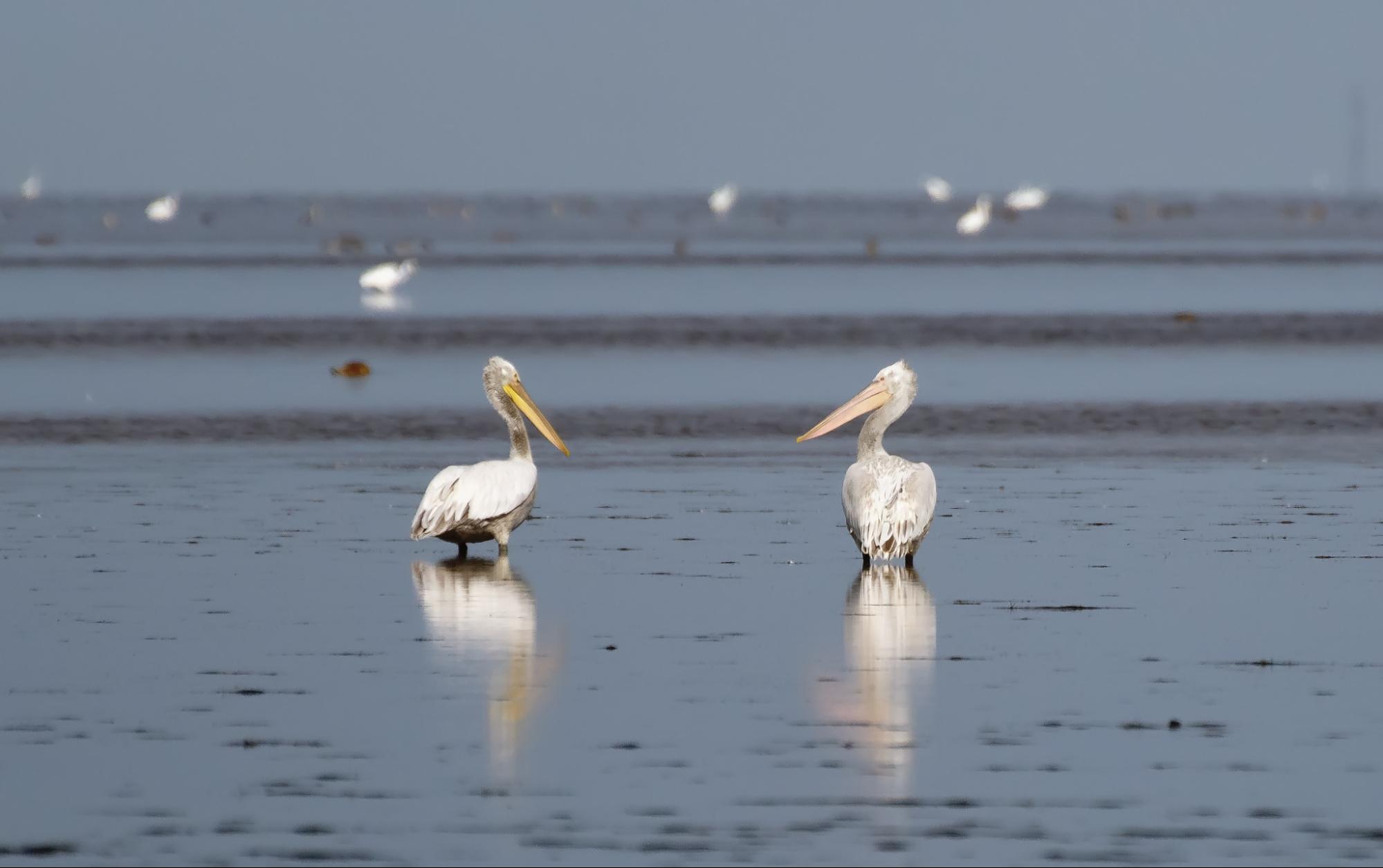
Ukrainian scientists found Pelicans nesting in the Black Sea Biosphere Reserve in 2022 and 2023 when the territory was occupied—a photo taken in 2020 by Ihor Chervonenko.
Another method for gathering data involves utilizing Earth remote sensing techniques and subsequently deciphering the data. While it may seem complex, in reality, we are simply referring to satellite imagery. With access to data from the European Space Agency and the US National Geological Survey, scientists can remotely monitor events such as wildfires, territory flooding, various forms of pollution, and soil degradation.
"This current war is very much modern, and so are the methods we use to assess its aftermath. Drawing on other organizations' experiences, we've developed our own monitoring techniques. Our scientists are putting in the immense effort, and forgive me for boasting, but there is no analog of the work carried out by our scientists in the world," Kholodniak remarks.
The captured data will aid in accurately documenting the factors that have led to changes in biodiversity within a particular area. It is worth noting that this information is gathered not only within the confines of the National Park but also within the boundaries of the Black Sea Reserve, as the ecosystems there are interconnected and do not recognize administrative boundaries, according to Kholodniak.
Restoration
At the conclusion of the article, there will not be any positive predictions regarding the amount of time it will take for the beloved Kinbourn to return to its pre-war appearance. According to Pavlo Kholodniak, currently, only catastrophic forecasts can be predicted– in other words, the worst-case scenario.
"We predicted the potential outcomes of detonating the Kakhovka HPP dam by 2022. Just six months later, disaster struck, and we were prepared. Currently, we are examining strategic plans and making forecasts about what may occur next, such as the effects of explosives on the environment, fuel and lubricant pollution, mining, and potential scenarios for clearing the coastal area and its impact on ecosystems in the future," Kholodniak explains.
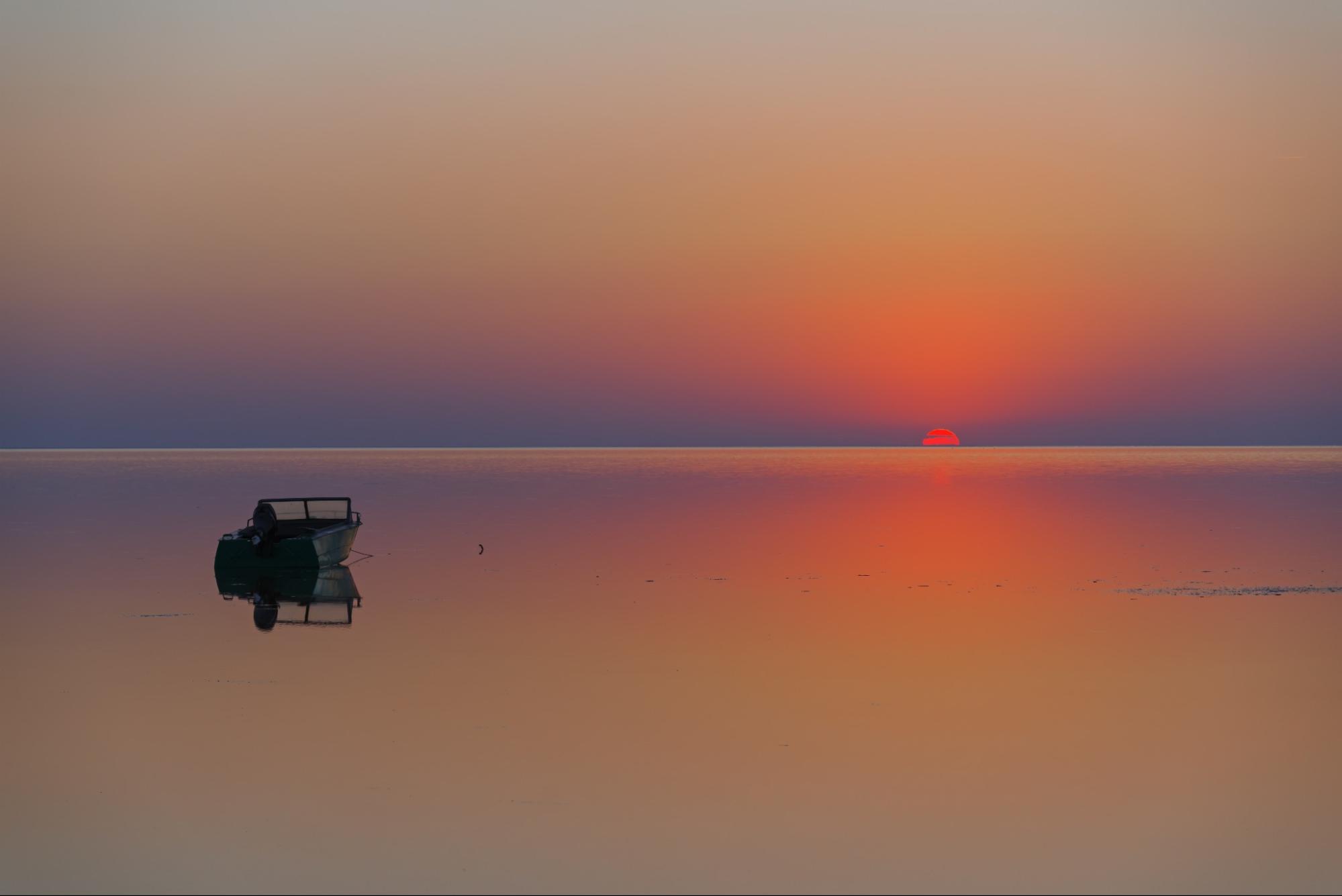
The sunset over the horizon at the Black Sea Biosphere Reserve. Photo taken by Ihor Chervonenko in 2020
Despite the devastating impact on the region's ecosystems and the health of those who call it home, there is still hope for recovery. Although biodiversity has been lost, nature has an incredible ability to heal itself. While the composition of biodiversity, landscapes, and even the air may shift, scientists can use the data they collect to understand these changes and their reasons. This knowledge can aid in predicting the consequences of war in other damaged areas and potentially inform recovery efforts.
The project "Biosphere Reserves of Ukraine: War Stories within Nature Conservation Organizations of Building a Sustainable Future" was made possible with the support of UNESCO. The labels used and information presented do not reflect any stance from UNESCO regarding the legal standing of any nation, region, city, or local government, nor the delineation of their borders. The author holds responsibility for choosing and presenting the details included in this article and the viewpoints expressed, which may not align with those of UNESCO and do not bind the organization.
Newsletter
Digest of the most interesting news: just about the main thing



